Tri bitna problema Bosne i Hercegovine....................................................................139 Ljudska prava na politicku i nacionalnu ravnopravnost u Bosni i Hercegovini.........................145 Uloga domacih nevladinih organizacija u socijalnoj rekonstrukciji i civilnom drustvu..................154 Privid civilnog drustva........................................................................................161 Anatomija jednog morala.....................................................................................170 Antifasizam danas.............................................................................................179 Intelektualna mocvara i postratni profiteri.................................................................185
More...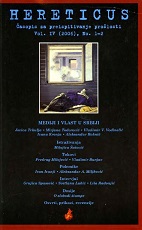
Keywords: national mobilisation and homogenisation; Yugoslavia; ethnic state; Serbia; Slovenia; constitutional question; national sentiment; clientelism; conversion of communism-nationalism; nomenclature; power; sacrifice of Yugoslavia
By legitimisation of ethnic states, the public proclamation that Yugoslavia is unacceptable and impossible, historically worn out and by unbending in pretensions of all nationalism in Yugoslavia, the process of internal homogenisation and mobilisation of nations successfully began in order to establish the full sovereignty and consolidation of ethnic states. This proved to be fatal for the survival of the joint state regardless of modalities for its reorganisation which were at the end only the mask of real autochthon national aspirations. Yugoslavia was sacrificed since it could not fit into that framework. The process of national mobilisation and homogenisation most clearly took place in the escalating Serbian nationalism by subjecting all other forms of identity to the national sentiment as well as by mutation of the class system into the national, by conversion of communist bureaucrats into nationalist heads within the social structure and framework which enabled the action of old/new nomenclature and its despise towards civil values and institution. A parallel process happened in Slovenia, reflecting itself in other republics and assisting the national parties to win and consolidate their power. This was the syndrome of illness of Yugoslavia and its last phase as well as the presumption of its end and break-up.
More...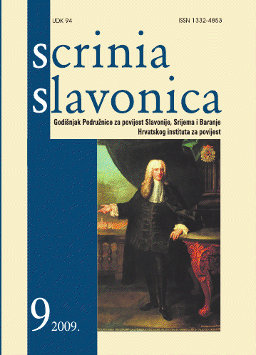
Keywords: Western Slavonia; Middle Ages; Catholic churches; Orthodox churches; castles; Novska; Nova Gradiška; Pakrac; Daruvar; Grubišno Polje; Virovitica; Slatina.
The author of the paper discusses medieval and early modern edifices in Western Slavonia (the territory of former municipalities Podravska Slatina, Virovitica, Grubišno Polje, Daruvar, Novska, Nova Gradiška, and Pakrac) that have completely vanished. The introduction provides a short overview of the borders of Western Slavonia and the paper’s methodology, followed by an individual analysis of each of the aforementioned zones, with a list of individual edifices that disappeared in the 19th and 20th century. The focus is on medieval forts and Catholic and Orthodox churches. Architectural heritage vanished due to wars and negligence of the local population. The paper is based on verbal statements from the local population, field research, and study of topographic maps, literature, archival materials, and materials held by the conservation boards in Sisak, Bjelovar, Požega, and Zagreb. This short overview of monuments in Western Slavonia that completely vanished in the 19th and 20th century is only the beginning of a much more comprehensive research that is supposed to encompass a far broader territory and a far longer time period (peripheral areas – the Požega and Orahovica zones – should be included in Western Slavonia). Archeologists have already completed the pioneer tasks, reconnoitering the field and cataloguing archeological localities. Now it is up to historians (whose work has already been started in some parts of Western Slavonia) and arts historians to do their part of the work. The complete knowledge about vanished monuments in these parts has still not been collected in one place. The literature is not too abundant and is sometimes hard to access. The cataloguing of vanished monuments is going to provide a good historical insight into Western Slavonia throughout past periods. Let us hope that the existing remains of medieval monuments and Orthodox temples and Catholic churches will avoid the fate of the edifices described in this paper.
More...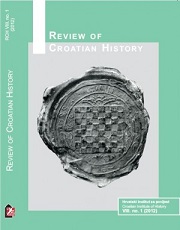
Keywords: World War II; Independent State of Croatia; Croatia; Croats; human losses; war crimes; Chetniks; Yugoslav Army in the Fatherland; Partisans; People’s Liberation Army and the Partisan Detachments of Yugoslavia/ Yugoslav Army; Communist Party of Yugoslavia
On the basis of the most important historiographic, demographic and victimological works, the human losses of Croats caused by the Chetniks/ Yugoslav Army in the Fatherland and the Partisans/People’s Liberation Army and Partisan Detachments of Yugoslavia/Yugoslav Army and the newly-established communist authorities are shown. This work presents the initial, most often arbitrary estimates and claims, followed considerably more reliable statistical/demographic calculations, and finally individual name and numerical indicators based on more systematic research.
More...Miroslav Mojžita - Josip Muselimović, “Probuđena sjećanja”, “Moje odvjetničke godine” i “35 godina u službi pravde i humanizma Antun Lučić - Sonja Jurić, Suncokret pognute glave Mrina Kljajo Radić - Igor Zidić, Kost i gozba Milo Jukić - Aida Šečić, Lutke, Književna zaklada „Fra Grgo Martić“, Kreševo, 2011. Atif Kujundžić - Ivan Sivrić, Vjerujem u Hercegovinu, Matica Hrvatska, Mostar, 2009. Mato Nedić - Pero Pavlović, vrutak. stručak. sinje blago, Društvo hrvatskih književnika, Zagreb, 2009. Jasmina Hanjalić - Lidija Pavlović Grgić, Kišne kapi u piščevoj luli, Zaklada Fra Grgo Martić, Kreševo, 2011. Mujo Musagić - Ljubica Ostojić: Čitančica za djevojčice i ptice, Međunarodni centar za mir i Planjax, Sarajevo, 2008. Fabijan Lovrić - Orman, Rapko: Pjesmovita proza života. Ur. Ahmet Burek; 120mm x 199 mm, 120 stranica, meki uvez. Naklada, autor; Livno, 2011. Željko Grahovac - Kemal Mahmutefendić, Najnježnije čudovište na svijetu Jasna Ivić - Snježana Baotić, Stijena uspjeha, pjesme, HKC Domaljevac, 2011. Safet Berbić - Ćamil Softić, Zaljubljeni jarac, pjesme za djecu. Ilustracije: Ivica Ćavar. Naklada: „Dobra knjiga“, Sarajevo, 2012. Mira Šubašić - fra Bono Nedić, Razni doživljaji prošlosti, Zaklada „Terra Tolis“, Tolisa, 2011. Vesna Nosić - Zoran Hrkać, Kamen u zemlji, Zbirku mojih pjesmica, Posavska Hrvatska, 2006. Ivan Baković - Fra Jerko Karačić, Uspomene iz doba mučeništva, Vicepostulatura postupka mučeništva fra Leo Petrović i 65 subraće– Široki Brijeg i Nova stvarnost – Zagreb, urednik fra Vendelin Karačić
More...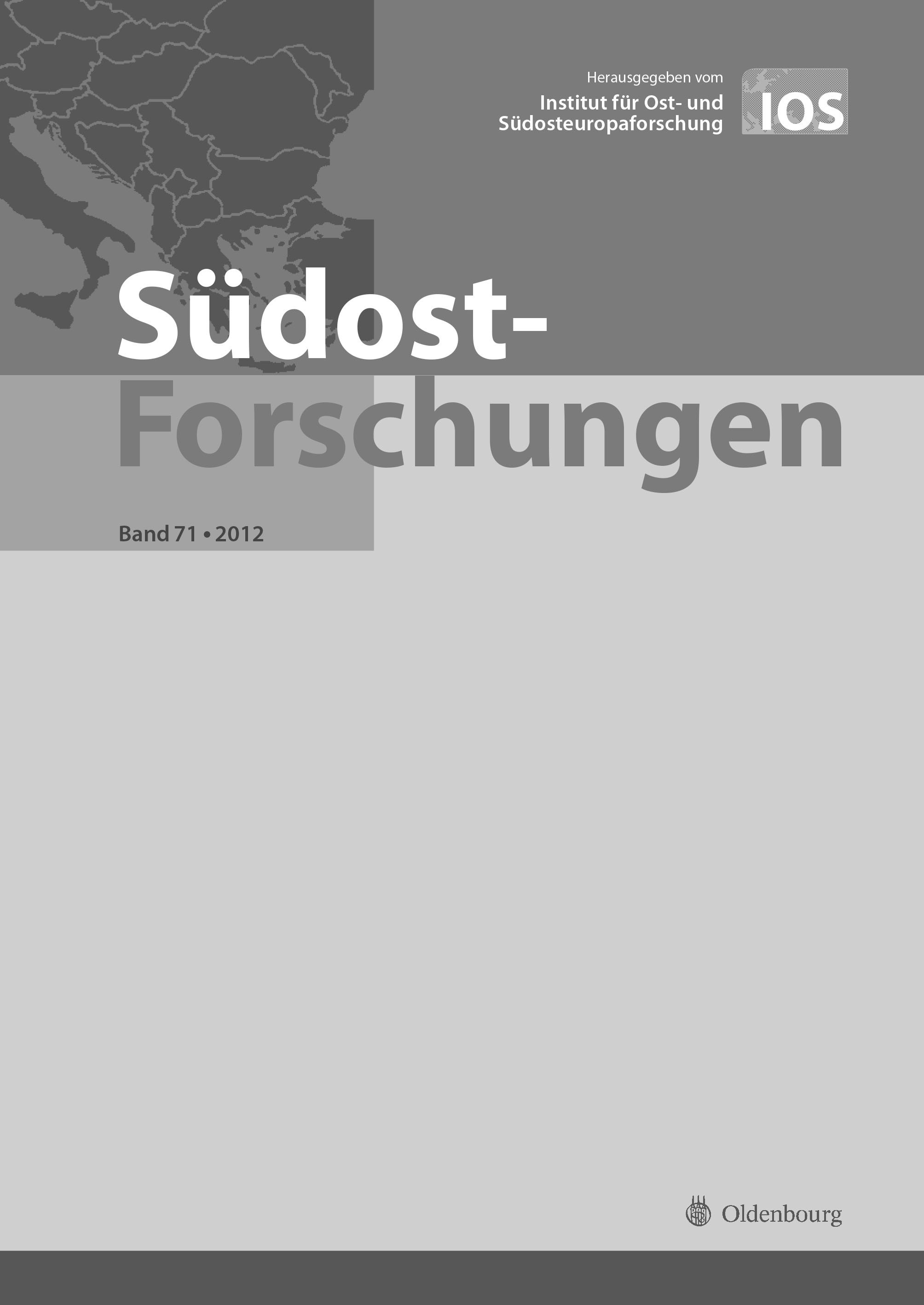
This work presents a rarely studied contingent of Jewish emigres during World War II: the Jewish refugees to Yugoslavia. Based on extensive research in the State Archives of Croatia (Zagreb) and Slovenia (Ljubljana), as well as memorials and reports by key witnesses, the author describes Jewish emigration from Germany since 1933 and from Austria since 1938 to the Kingdom of Yugoslavia. While initially providing a safe haven, after unconditional surrender in 1941 the country was no longer capable of protecting either its own citizens of its Jewish refugees. The Jews in Serbia – both refugees and citizens – felt the impact of the German military authorities. Measures institutionalizing persecution began on May 30 based on practices already in place in Germany. Concentration camps were erected in July and the round up of Jews began on October 21, 1941. The German Army shot the male passengers of the „Kladovo-transport“ in retaliation for fallen German soldiers. By August 1942 “Serbia was ‘judenrein’”. In Croatia, in contrast, the systematic roundups of Croatian, Bosnian and foreign Jews began in the summer of 1941 when the central concentration camp in Jasenovac opened its doors. Initially, the deported Yugoslav victims were ‘foreign’ Jews, mainly from Austria, Germany. By the fall, however, transports included Jews from all over the Independent State of Croatia (Sarajevo, Tuzla, Zagreb and elsewhere). In 1942, the German occupation authorities in Croatia, namely the representatives of the Reichssicherheitshauptamt (RSHA), began implementing the “Wannsee-Conference”-decisions. Between August 1942 and the end of 1944, two massive deportations as well as some smaller transports passed from the Croatian camps towards Auschwitz and Bergen- Belsen. There are no records of any one returning. As a conclusion it must be pointed out, that the Ustasha – in contrast to standard conceptions – was not merely a German puppet. Committed to their own interests, they won a measure of independence by managing the persecution and extermination in Croatia’s concentration camps. The genocide in Croatia was a self-promulgated program, although it was inspired by Nazi-ideology.
More...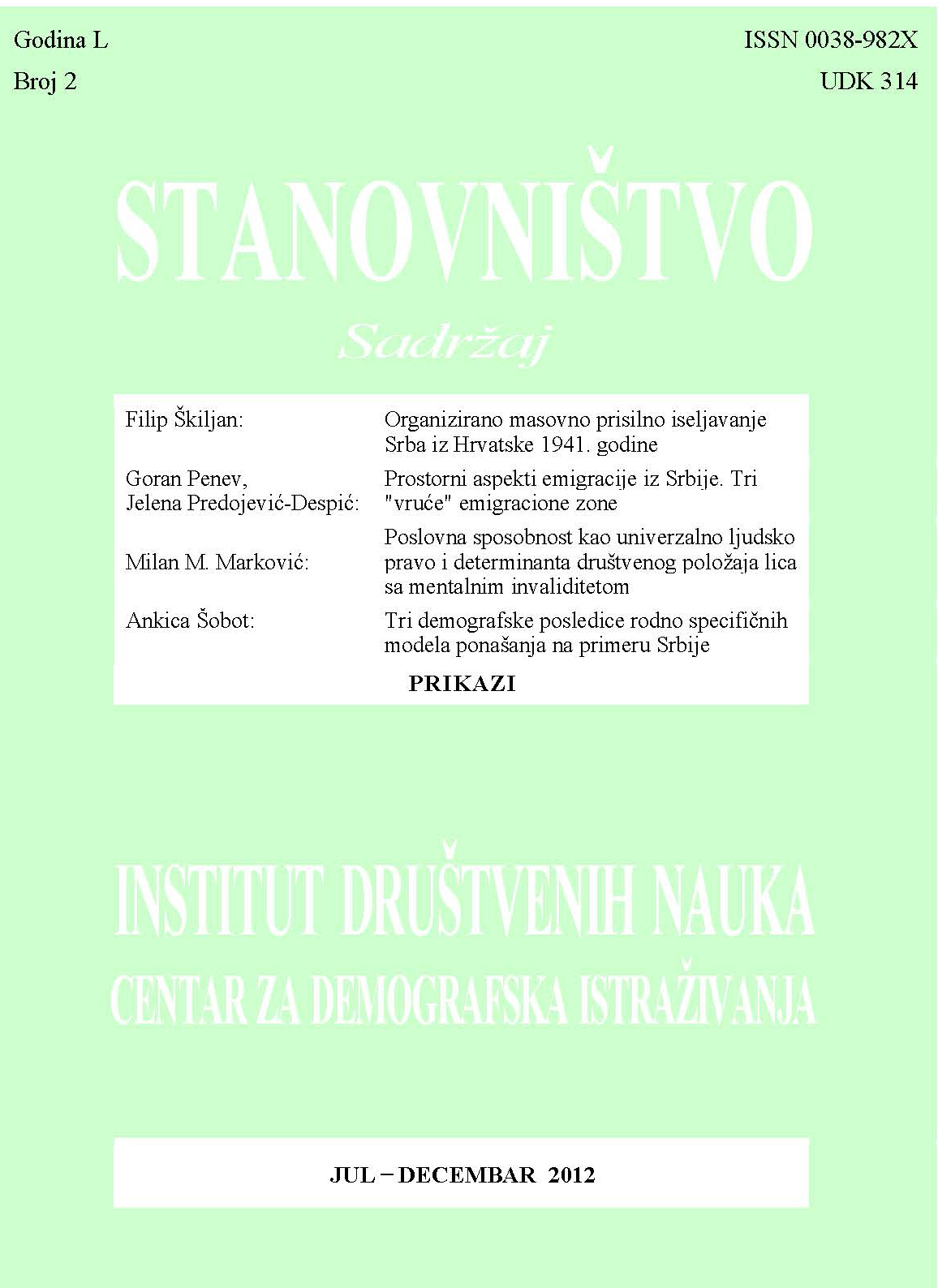
Keywords: Serbs in Croatia; NDH; 1941; World War II; migrations
Paper brings forth a range of information on forced migration of the Serb population from the Croatian part of the Independent State of Croatia in 1941 (NDH). Almost one third of the population were Serbs in the NDH. One of the methods of solving “the Serbia issue” in the NDH was migrating the Serbs into Serbia. The other methods were forced conversions of the Serbian population, namely physical killings. The adopted legal provisions made the terror policy over Serbian population legitimate. A conference was held on June 4th in the German legation in Zagreb. At the meeting it was agreed that Slovenians from Styria were to be moved to NDH, and Serbs from the NDH to Serbia. Deportation was to be carried out in three waves. The first wave was to last from June 7th to July 5th and 5000 Slovenian intellectuals from Lower Styria were to be deported directly to Serbia, except for catholic priests who were to be deported to the NDH. Orthodox priests from the NDH were to be deported to Serbia together with their families. In the second wave, lasting from June 10th to August 30th, 25,000 Slovenians from Slovenia were to be deported to the NDH and NDH was to deport just as many Serbs. In the last wave (from September 15th to October 31st), 65,000 Slovenian peasants from the Gorenjska region (Upper Carniola region) were to be deported to the NDH, and NDH was to migrate just as many Serbs to Serbia, as well as 30,000 Serbs whose citizenship was not acknowledged by the NDH. The government of the NDH founded an office for this purpose under the name State Directorate for Renewal. The migration of the Serbs from NDH began in June of 1941. Volunteers from the Salonika Front were then moved from their properties in Slavonia and Srem. Their total number was about 28,000. Then the Orthodox priests were migrated. According to the lists made by the NDH authorities, 327 of them were migrated from the NDH. 104 priests from the Croatian part of NDH were moved away in an organized manner. One part of them managed to escape before they were arrested. The migration of priests was carried out through transit camps in Caprag and Požega. Massive deportations of the Serbian population through transit camps in Caprag, Bjelovar and Požega began with the arresting of Serbs in Zagreb in the first half of July 1941, and then continued in other districts of northern Croatia and Bosnia. The total number of migrations in an organized manner from the Croatian part of the NDH up to the beginning of September 1941, according to the name list drawn up in 2012, amounted to 9875 Serbs, although that number was not final since there were greater disparities for certain districts. By the end of September 1941, the Ustashas migrated 14,733 Serbs out of the NDH in a legal way. Croatians from Dalmatia, Herzegovina and the Croatian Zagorje as well as displaced Slovenians primarily originally from Styria, moved into their houses. The authorities of NDH confiscated the property of the forced out Serbs. Other forms of the Ustasha terror, like massive killings, caused intensive illegal emigration of Serbs from NDH to Serbia, which, according to German data, had already increased to around 180,000 relocated Serbs by the end of July, although it seems this number exceeded 200,000 by the end of September. Organized migration was ceased in October 1941 after the German authorities in Serbia forbid further immigration of Serbs from the NDH mainly because of the uprising in western Serbia. Part of the banished Serbs from the Požega concentration camp were returned home to the districts of Osijek, Garešnica, Križevac, Virovitica and Ludbreg. However, from the documentation of the Commissariat for Refugees in Belgrade, it is evident that the research on the migration of Serbs from Croatia and the whole of NDH was not finished in 1941, so the number of 200,000 relocatees who have left is not final.
More...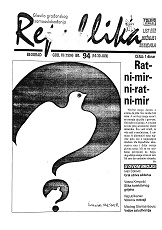
Keywords: "Živeti u Sarajevu"(group); W.R.: Mysteries of the Organism; Tanjug; political orthodoxy; right-wing nationalism in Serbia; Nova desnica; Novi Pančevac (newspaper); media in Serbia; Yugoslav army;
Ratni- mirni- ratm- mir Mir/Rat Mir za Bosnu — spas i za nas Dubravka Stojanović, Rat je logičan! Olga Zlrojević, "Dosta se je zla činilo... Vesna Krmpotić, Slika kolektivnog grijeha Hatidža Dizdarević Krnjević, Čerečenje trudne Evrope Džejlana Pećanln, Senka Kurtović, Beograde, probudi se... Ljubinka Trgovčevlć, Slivene različitosti Milan Prodanović, Ujedinjenje odozdo Učinite to sebe radi Ž. Miloradavić, "Nije to ništa" Dragoš Ivanovič, Mit o nedodirljivosti Opšta politizacija Dušan Mojsin, Mrzeti mržnju, Vojislava Vignjević, Kako socijalisti kažu Nebojša Spaić, Stvaranje događaja Virovi u mrtvaji Orgija postmoderne "Civilizovana razmena stanovništva" Podvalantska levica Rade Veljanovski, Moć i nemoć Olivera Glumac, Bratstvo od sto hiljada maraka Gabriela Pajević, Raspirivanje budućnosti Pesnici i popovi Olivija Rusovac, "Masovna neupotreba ljudi" Stvaranje i njegovo suzbijanje Dve Sorbone Zadovoljstvo kreacije Vladimir Marković, "Treći put" superpatriotizma Ivan Čolović, Gral ubija aždahu Mirko Dorđević, Legenda o trulom Zapadu Mšodrag Stanisavljevlć, Vežbe zaluđivanja
More...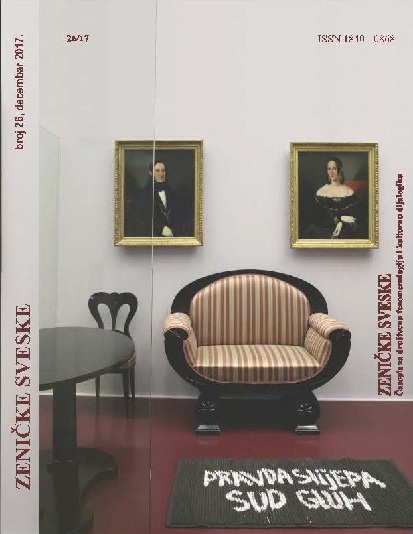
Keywords: Ghosts of Identity; Culture;
Slom i nestanak Titove Jugoslavije, početkom devedesetih godina prošlog stoljeća, bio je politički i socijalni potres tektonskih proporcija. U dvije decenije iza početka rata sedam novih država se izdiglo iz pepela nekadašnje zajedničke kuće.
More...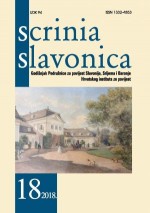
Keywords: Reviews;
Reviews: Ivan Fremec ̶ James TAN, ”Power and Public Finance at Rome” 264-49 BCE (New York: Oxford University Press, 2017). 214 str. ISBN 978-0-19-063957-0. Josip Parat ̶ Péter KOVÁCS, “A History of Pannonia during the Principate” (Bonn: Dr. Rudolf Habelt GMBH, 2014). 380 str. ISBN 978-3-7749-3918-9. Goran Đurđević ̶ Danijel DŽINO i Alka DOMIĆ KUNIĆ, “Rimski ratovi u Iliriku. Povijesni antinarativ” (Zagreb: Školska knjiga, 2013). 239 str. ISBN 978-953-0-61991-3. Denis Njari ̶ Márta FONT i Gábor BARABÁS, “Kálmán (1208-1241). Halics királya – Szlavónia hercege” (Budapest – Pécs: Magyar Történelmi Társulat – Kronosz Kiadó, 2017). 202 str. ISBN 978-963-467-000-1. Anđelko Vlašić ̶ “Opis putovanja Jurja Husa” / “Descriptio peregrinationis Georgii Huszthii” prijevod s latinskog Zrinka Blažević, ur. Mario Kolar (Koprivnica: Društvo hrvatskih književnika, Podravsko-prigorski ogranak, 2017). 184 str. ISBN 978-953-278-244-8. Anđelko Vlašić ̶ Pál FODOR, “The Unbearable Weight of Empire. The Ottomans in Central Europe – A Failed Attempt at Universal Monarchy” (1390-1566) (Budapest: Research Centre for the Humanities, Hungarian Academy of Sciences, 2015). 176 str. ISBN 978-963-9627-93-2. János Majdán ̶ Denis NJARI, “A kelet-szlavóniai magyarok a két világháború között / Mađari istočne Slavonije između dvaju svjetskih ratova” (Osijek: Demokratska zajednica Mađara Hrvatske – Mađarski kulturni krug Zrínyi – Studio HS Internet, 2017). 156 str. ISBN 978-953-7630-93-5. Miroslav Akmadža ̶ Domagoj TOMAS, “Apostolska administratura za sjevernu Slavoniju i Baranju (1923.-1972.)” (Đakovo – Osijek: Katolički bogoslovni fakultet u Đakovu – Sveučilište Josipa Jurja Strossmayera u Osijeku, 2018). 247 str. ISBN 978-953-6935-41-3. Ana Rajković ̶ Anna Maria GRUENFELDER, “Sustigla ih Šoa. Strani židovski izbjeglice u Jugoslaviji (1933.-1945.)” (Zagreb: Srednja Europa, 2018). 315 str. ISBN 978-953-7963-71-2. Zlata Živaković-Kerže ̶ Jugoslavija u istorijskoj perspektivi (Beograd: Helsinški odbor za ljudska prava u Srbiji, 2017). 544 str. ISBN 978-86-7208-207-4. Ivan Milec ̶ Čedomir VIŠNJIĆ, “Vreme sporta i razonode – Titina Hrvatska i njeni Srbi, 1951.-1971.” (Zagreb: SKD Prosvjeta, 2017). 496 str. ISBN 978-953-7611934. Miroslav Akmadža ̶ Julija BARUNČIĆ PLETIKOSIĆ, “Katolička crkva u Hrvatskoj i Domovinski rat 1991.-1995.: stavovi, djelovanje, stradanja” (Zagreb: Glas Koncila i Hrvatski memorijalno-dokumnetacijski centar Domovinskog rata, 2017). 340 str. ISBN 978-953-241-535-3. Gabrijela Baričić ̶ Mateo ŽANIĆ, “Kultura sjećanja između emocija i institucija. Reprezentiranje Vukovarske bitke od 1991. do 2016.” (Zagreb: Institut društvenih znanosti Ivo Pilar, 2017). 256 str. ISBN 978-953-7964-42-9. Irena Mihaljević ̶ Zbornik Muzeja Đakovštine, sv. 13, gl. ur. Borislav Bijelić (Đakovo: Muzej Đakovštine, 2017). 407 str. ISSN 1334-772X.
More...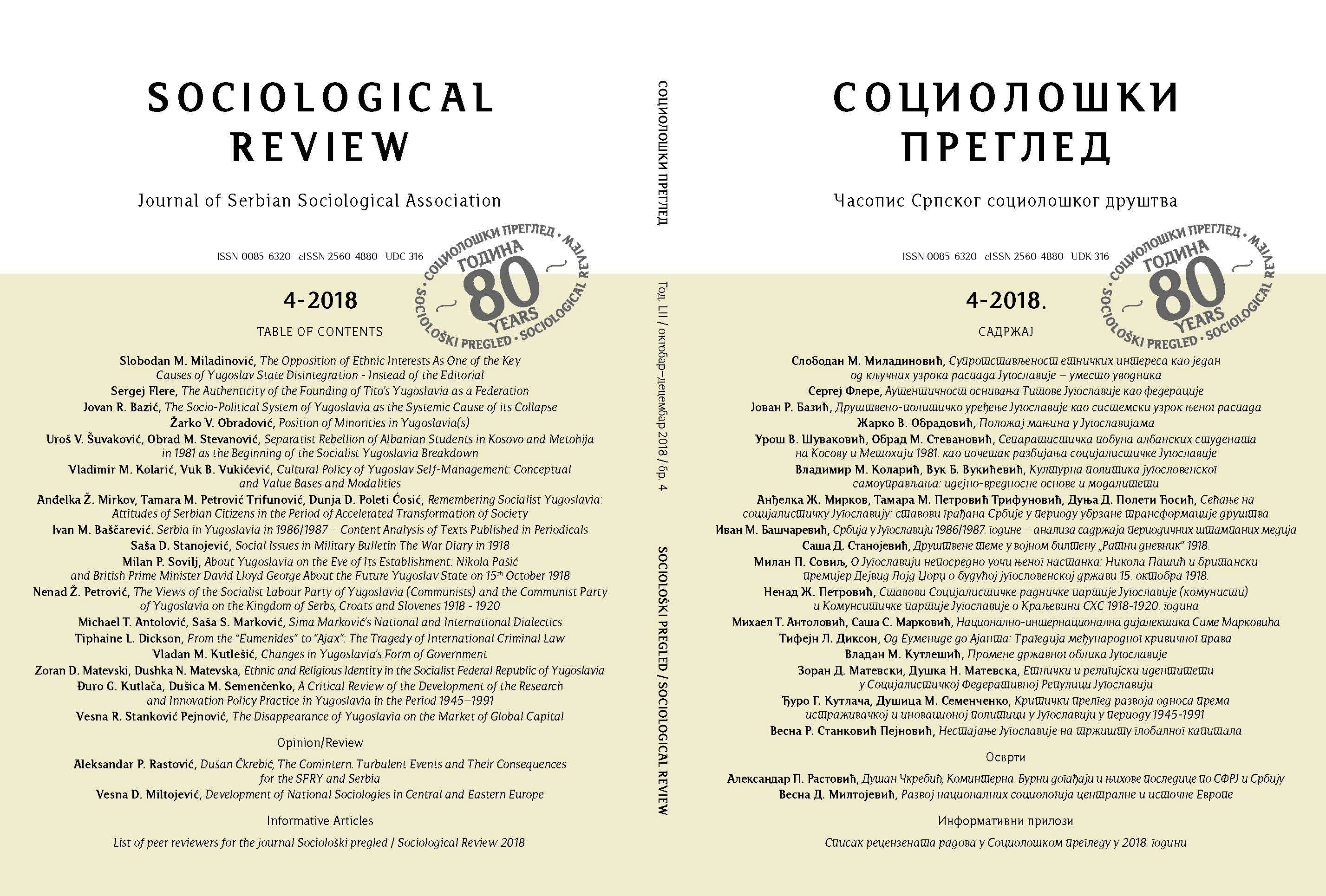
Keywords: Kosovo (K&M);Yugoslavia;student protests in 1981;Albanian separatism;chauvinism;
This paper highlights the socio-historical preconditions arising before the protests of Albanian students in Kosovo and Metohija in 1981, which turned into an open separatist rebellion. These preconditions had their roots in the views of the Comintern regarding the national question in Yugoslavia, as well as in the decisions of the KPJ (Communist Party of Yugoslavia) Dresden Congress. The future development of the events in the post-war socialist Yugoslavia, from time to time, actualized these decisions and attitudes, and the process of the development of Yugoslav community headed towards its dissolution. Based on a sociological analysis of the contents of literature and original documents that have now become available to the scientific public, a conclusion is drawn that the rebellion of Albanian separatists in Kosovo and Metohija (K&M) in 1981 was only an introduction to the process of Yugoslavia breakdown. Although it was suppressed by means of an effective engagement of the forces of the police and the Yugoslav People’s Army (YPA), in accordance with the orders of the federal leadership, it meant the beginning of a process that was unstoppable. A permanent destabilization of Yugoslavia and Serbia continued through activities of low-intensity (propaganda, subversion, later attempted murders, murders, terrorist acts) in Kosovo and Metohija, but over time, there grew a cooperation between Albanian separatists and the separatists in other Yugoslav republics who came to a conclusion that it was a convenient moment for presenting their own separatist demands. The role of students in the rebellion in Kosovo and Metohija was only initial and marionette in nature: the separatists correctly estimated that it would be more difficult to use force against students, than against an open revolt. When the organizers realized that the number of students willing to directly participate was insufficient, they began to enlarge the protests with high school students and workers, but even then the state reaction was adequate.
More...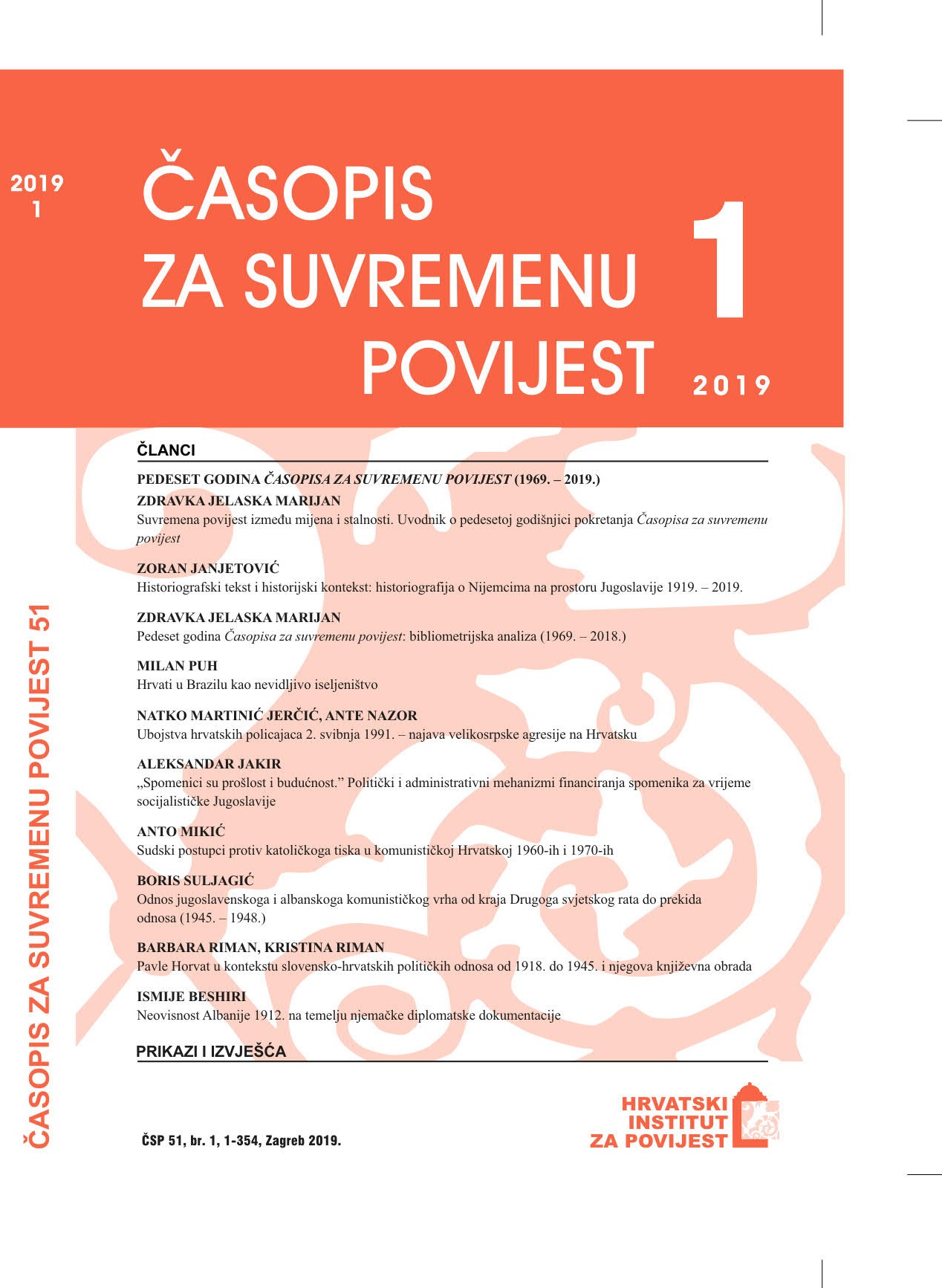
Keywords: Germans; Ethnic Germans (Volksdeutsche); historiography; Yugoslavia; Slovenia; Croatia; Vojvodina; Bosnia and Herzegovina; World War II; camps;
The paper deals with the representation of the Ethnic Germans (Volksdeutsche) in the historiography of the territory once comprising Yugoslavia. The author divides his subject matter according to regions (Slovenia, Croatia, Serbia, and Bosnia-Herzegovina) and periods (inter-war, communist, and post-communist). During the first period, the Volksdeutsche were not a prominent topic in historiography of the three leading Yugoslav peoples, not even in Slovenia, which had the longest history of ethnic strife between the Slovenes and the Germans. It was the Ethnic German authors who published the most works on the Volksdeutsche in this period. Most of them appeared in the 1930s, as many Danube Swabian settlements celebrated the 150th or 200th anniversaries of the arrival of the Germans.After WWII, in which the Ethnic Germans had sided with the invaders and were afterwards collectively punished by the new communist authorities, they acquired the image of the “bad guys” of post-war historiography. During the first 15-odd years, works on them were scarce, although several official papers and memoranda enumerating their war crimes and treasonable activities before and during WWII were written soon after the end of the war. In the course of the 1960s, several important works appeared and set the trend for the 1970s and part of the 1980s. Most of them were published in Slovenia. These works also covered the longest time span. In other parts of Yugoslavia, works on the Volksdeutsche usually dealt with their colonization or with WWII. Works on WWII always insisted on German war crimes, persecution of Jews, and combat against the Partisans.Since the mid-1980s, the image of the Volksdeutsche has become more realistic and less biased. Slovene and Austrian historians organized a conference in 1984 (that engendered a collection of papers in 1986) on the Germans in Slovenia 1848–1941, which made the new trends plain to see. In other parts of the country, several works on the Volksdeutsche Partisan company appeared.During the second half of the 1980s, as the communist political and economic system started to dilapidate, historiography posed new questions, discovered new topics, and opened new approaches. The revision and questioning of decades-long myths and established truths began.This trend boomed after the break-up of Yugoslavia and collapse of the communist system. Communist crimes at the end of WWII – and the atrocities against the Volksdeutsche – became one of the best-researched topics. Gradually, other German-related topics were taken up and – although old views still persisted here and there – the German minority became part of national histories once again. This production has been very lively in Slovenia and especially in Croatia, whereas the number of works in Serbia, and especially in Bosnia-Herzegovina, has lagged behind.
More...Keywords: Franc Žužek; Glina; Croats; Serbs; Independent State of Croatia;
Although all relevant sources agree that Franc Žužek, a long-serving parish priest in Glina (1927 — 1955), had a significant position in social life of Glina and its surroundings, critical historiography missed to comprehensively study his biography. The objective of this paper is therefore to present the major events that illustrate his pre-war, war and post-war career and explain some issues important not only for Glina and Croatia, but also for the broader region, during a longer period that include several “historical breaking points”. The author based his research on relevant archive sources, existing bibliography and available newspaper sources. The article reveals new facts about one of the most prominent personalities in the 20th century Glina.
More...Keywords: Grave site; monuments; law;
Свако рађање прати смрт. Разумљиво је стога што је ова појава предмет интересовања како филозофије тако и многих дру- гих наука, а истовремено и незаобилазна тема свих религија.
More...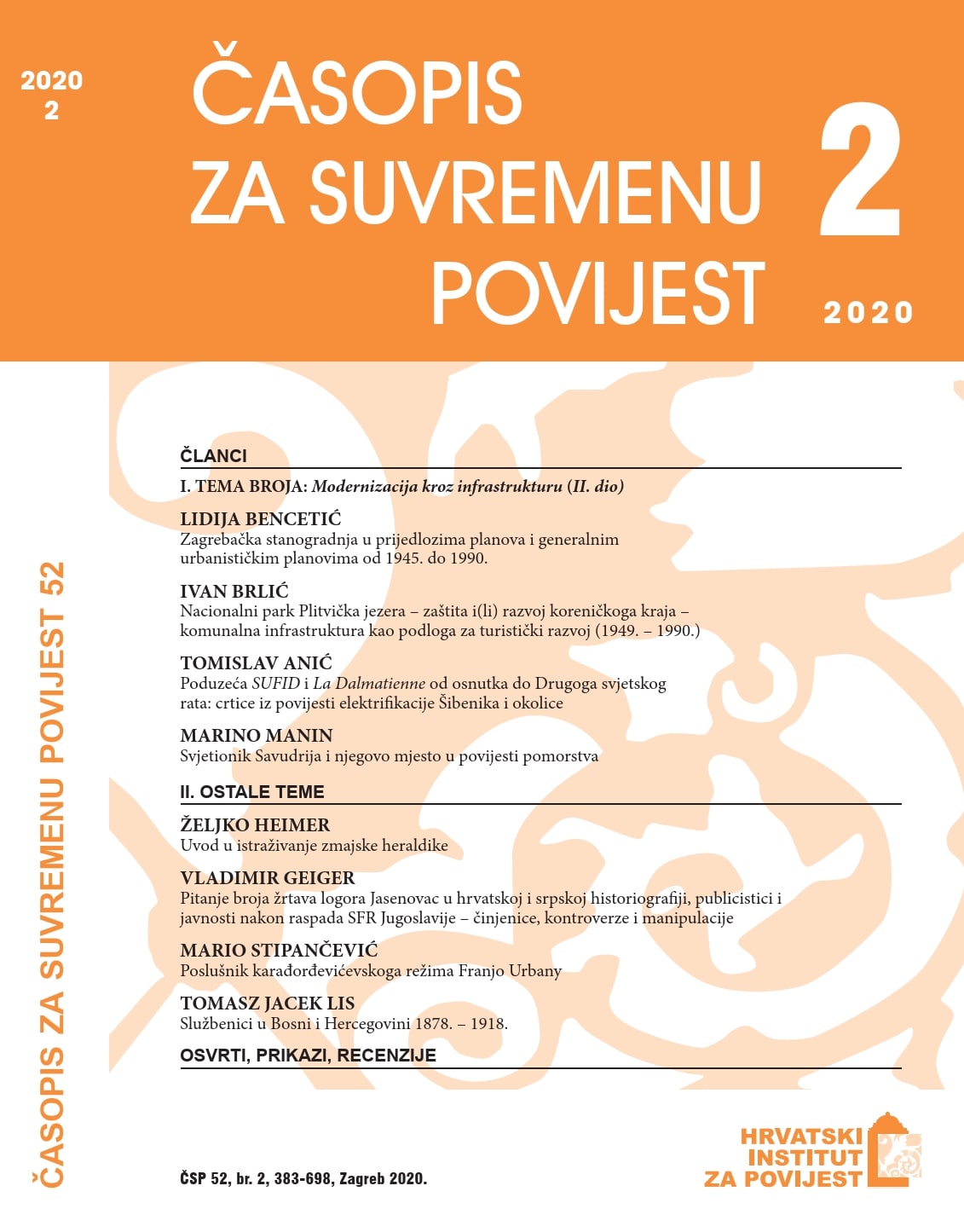
Keywords: Independent State of Croatia; Jasenovac concentration camp; victims; controversies;manipulations;
The most controversial and unresolved issue of human losses of Croatia and Yugoslavia in World War II is the number of victims of the Jasenovac camp. Lists of victims and estimates and calculations by historians and demographers often diverge widely on this point, ranging from minimisation to impossible megalomaniac claims, and are strongly linked to (daily) politics. Especially after the disintegration of the Socialist Federal Republic of Yugoslavia, the issue of the number of victims of the Jasenovac camp began to be interpreted differently from the until then only permitted one-sided and ‘megalomaniac’ approach. Democratic changes, but also rising nationalist sentiment during the Yugoslav Wars of the 1990s, led to studies on the human losses of Yugoslavia in World War II, and the unavoidable issue of the number and structure of Jasenovac camp victims, having a distinct ideological-propaganda background in Croatian and Serbian historiography, opinion journalism, and public discourse. Serb nationalists vastly inflate the number of Jasenovac camp victims, most of all Serbs, while Croat nationalists strive to minimise this number. The issue of the number and structure of Jasenovac victims is heavily nationally, ideologically, and emotionally charged, which greatly hinders evaluation. Proponents of both left and right worldviews in Croatia and Serbia continue to ignore and belittle any research and facts that do not support their favoured image of the past. Furthermore, they devaluate proven facts and present typical justifications. Inflation or reduction, omission, often coupled with ignorance, stem from personal, national, or political motives. It is noticeable that both Croatian and Serbian media, for the most part, transmit such efforts. The Jasenovac camp and the number and structure of its victims continue to be popular discussion topics in Croatian and Serbian historiography and opinion journalism, which have stratified into the left and right within national frameworks since the early 1990s, and in Croatian and Serbian public discourse; very different, sometimes diametrically opposed statements and claims are made, often without basis in fact. Facts about the Jasenovac camp have been contaminated from the start, and we are still witnessing contamination from various sources, with no end in sight. Despite all the efforts of a part of Croatian and Serbian historiography, and some opinion journalism, no major progress has been made from the early 1990s until today regarding the research and aggregation of knowledge and new data on the number and structure of Jasenovac camp victims; our level of knowledge in this regard has remained more-or-less the same as in the pre-1990 period. There is no doubt that historiography, Croatian and Serbian, has yet to present substantiated answers about the number and structure of Jasenovac victims. This article presents and questions the most significant Croatian and Serbian historiographical and opinion journalism works – as well as the unavoidable echoes of the topic of Jasenovac victims in public discourse – that question the number and structure of the victims, including those that offer substantiated facts, but also some illustrative examples of indisputable ignorance and manipulation.
More...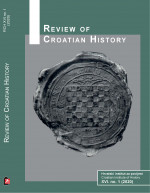
Keywords: Jasenovac; concentration camp Jasenovac; contemporary Croatian history; Ustasha crimes; Independent State of Croatia; 1941-1945; book review;
The review of: Ivo Goldstein, Jasenovac (Zaprešić; Jasenovac: Fraktura; Public Institution Memorial Area Jasenovac, 2018) 958 pp., [32 pp.] with tables: illus., geographical maps; 24 cm
More...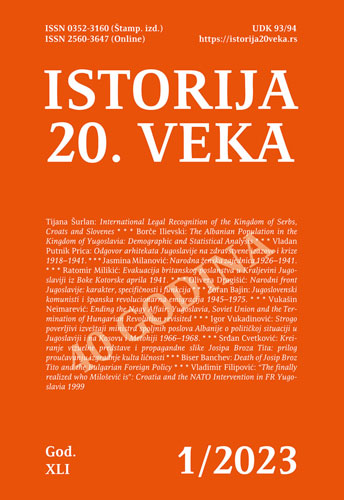
Keywords: Yugoslavia; Spain; Communism; Socialism; Emigration; Jesús Hernández Tomás; José del Barrio Navarro; Informbiro Resolution; Spanish Civil War
The authorities of communist Yugoslavia resolutely refused to recognize Franco’s regime in Spain. Since 1946, they maintained diplomatic relations with the government of the Spanish Republic in exile and provided it with regular financial assistance. Furthermore, the Communist Party of Yugoslavia (later the League of Communists of Yugoslavia – SKJ) maintained relations with Spanish revolutionary parties and political groups in emigration. The attention paid by the leading Yugoslav communists to those ties had doctrinal reasons, but also sentimental ones, since many of them had participated in the Spanish Civil War. In the period 1945–1948, the Yugoslav communists fostered tight relations with the Communist Party of Spain (PCE). However, after the Cominform Resolution against Yugoslavia in 1948, they were abruptly interrupted. The Yugoslav communists consequently approached other groups of Spanish emigration. In the early fifties, the closest relations were established with former communists grouped in the ephemeral pro-Yugoslav organization Acción socialista, especially with its leaders José del Barrio and Jesús Hernández, whose nearly anti-communist book on the Spanish Civil War was published in Yugoslavia. The Yugoslavs tried to forge close ties with the much more important Spanish Socialist Workers’ Party (PSOE) in 1953 and 1954, but without much success. After the reconciliation of the USSR and Yugoslavia, the relations between SKJ and PCE were gradually restored. The meeting of Santiago Carrillo and Dolores Ibárruri with Josip Broz Tito in 1965 represented a symbolic turning point. In the following decade, the relations between SKJ and the Eurocommunist PCE were as cordial as in their Stalinist past.
More...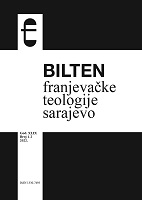
Keywords: conditio sine qua non; state terror; Yugoslavia;
Od prve polovice 19. stoljeća razvija se velikosrpski projekt koji za svoju bitnu sastavnicu uključuje genocidnu komponentu. Nakon velikosrpskoga nacionalnog programa Vuka S. Karadžića „Srbi svi i svuda“ (1836) i „Načertanija“ Ilije Garašanina (1844), godine 1902. Nikola Stojanović objavljuje u beogradskom Srpskom književnom glasniku članak (na temelju jednoga svoga ranije održanog predavanja na godišnjoj skupštini Srpskoga akademskog društva Zora iz Beča) pod naslovom „Srbi i Hrvati“, koji je potom pretiskan u zagrebačkom Srbobranu (glasilu Srpske samostalne stranke). Ubrzo je u Novom Sadu objavljeno i 2. izdanje s Pogovorom, da bi članak poslije postao općepoznat pod kolokvijalnim naslovom „Do istrage naše ili vaše“, što je zapravo citat iz samog teksta te savršeno sažima temeljnu autorovu tezu.
More...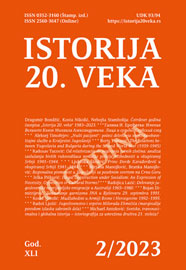
Keywords: Djordje Karadjordjević; Heir to the throne; Mental hospital; Occupation; Second World War; Serbia; Milorad Panić Surep; People’s Liberation Movement
Djordje Karadjordjević, the eldest son of King Peter I, was remembered as a brave and honest person, who didn’t agree to compromises. In public opinion, this impression often overshadowed the fact that his inappropriate behavior caused numerous incidents. Because of them, he renounced his right to inherit the throne in 1909, and was isolated and under medical supervision from 1925 until the beginning of the Second World War. During the Second World War, the German occupation authorities allowed Prince Djordje to live in Belgrade under certain conditions. He was under surveillance by the police and intelligence services, but despite this, he maintained contacts with representatives of the resistance movements. Both among the population and among the representatives of the resistance movements, there was an expectation that he would support and participate in the fight against the occupiers. In this sense, numerous rumors appeared in the public, and some of them were consciously created. Prince Djordje refused the offers of the occupation and collaborationist authorities to engage in their favor. Through his secretary Milorad Panić Surep, he provided financial assistance to the communist organization and tried to join the People’s Liberation Movement, but these efforts were not realized. After liberation, the authorities treated him with respect, but he was marginalized and his support and assistance to the People’s Liberation Movement remained unknown to the public. His fate was used for the propaganda of anti-dynastic views, primarily through the promotion of his memories, which only reached the beginning of the Second World War and portrayed King Aleksandar Karadjordjević in a negative light. Although seen as brave and determined person like his ancestor Karadjordje, Prince Djordje was also seen as a tragic figure, as a new Hamlet, whose fate, despite his personal courage, was embodied in the tragedy and suffering caused by his closest environment.
More...